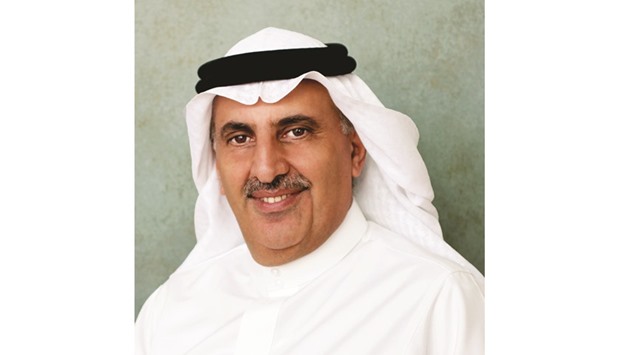It is oft-repeated now that 2016 is proving to be a challenging year for businesses in the Gulf Cooperation Council (GCC) countries. Several industries are beginning to feel the pinch of oil price volatility, which has dropped by more than 70% since January 2014.
While there are green shoots of recovery, for the hydrocarbon-rich states of the Arabian Gulf, oil price volatility has certainly had a serious impact on their financial bottom line. A closer look at market trends during this era of disruption, however, shows that these circumstances come with opportunities for diversification—prospects which, when seized, will make for a resilient regional economies.
For the region, hydrocarbon revenues are major contributors to regional earnings. Petroleum and liquefied natural gas are the cornerstones of Qatar’s economy and account for more than 70% of total government revenue, more than 60% of gross domestic product, and roughly 85% of export earnings. However, the government pumps back the revenues to the economy through investments in infrastructure, healthcare and education. Through this model, Qatar as well as GCC states has raised the standards of living of its people.
One could argue that everything is connected in this system. The oil harnessed from say, Al-Shamal Gas Field or Al Shaheen oil field, has not only made the livelihoods of the people in these fields, but also touched the lives of those who are employed in ancillary sectors - be it in banking, shipping, logistics and others. Oil and gas, thus, runs through the very veins of the Qatar economy.
While this model has made significant contributions to the development of this region, there is room for improvement through a concerted effort to diversify the economy to include non-oil tradable goods. That is taking the diversification narrative to the next level. Currently, while the need to diversify the economy is an accepted fact, the role that non-oil tradable goods play seems to be under-discussed.
Typically, any economic diversification narrative is dominated by the need to build soft power skills such as tourism, information technology, education and other sectors. The role of industrial manufacturing – especially the downstream drive within the petrochemicals sector and supporting industries – needs to be supported today to draw on the natural synergies offered by the economy.
This insight was, in fact, understood by Qatar’s leadership as early as four decades ago, when they embarked on developing a globally competitive petrochemicals industry. Indeed, diversification is a key pillar of Qatar’s Vision 2030, which has been in effect for years now.
In the early 1980s, the petrochemicals industry began out of the necessity to use the associated gas in the country’s oilfields, a resource that was previously flared causing pollution as well as wasted depleting natural resource. Today, Qatar is home to an 18.3mn-tonne petrochemicals portfolio, according to the Gulf Petrochemicals and Chemicals Association (GPCA), a figure that represents the second highest capacity in the GCC region. From a macroeconomic perspective, economic diversification has brought huge socio-economic benefits to the Qatari economy.
Instead, the diversification into manufacturing and in particular petrochemicals industries had proven to be a wise venture. This is made evident by examining the prices fluctuation of Brent versus Polyethylene during the period of June 2014 to January 2016. The drop in oil prices during this time had been 72% whilst that of polyethylene was 35%. In fact, polyethylene prices have been higher than the Brent crude at every bearish period since 2003—whether it was during shockwaves at the Lehman brothers collapse in 2008 or the difficult early period Euro debt crisis in 2012, this petrochemical commodity has been consistently higher than its upstream counterpart. This is a testimony to the vision of the GCC leadership which took bold steps to venture into the petrochemicals manufacturing to reduce the heavy reliance of national economies on volatile oil revenues.
While it might be true that we are living in challenging times, rather than dwelling on the negatives, let us look at obstacles as an opportunity to evolve, rather than decline. Research by the International Monetary Fund has found that diversification for oil exporting countries usually takes place in times of declining resource revenues and takes decades of development in the non-oil tradable sector.
In Qatar, the foundations for the non-oil sector - for industries such as petrochemicals, fertilizers, steel, aluminium, logistics, and shipping, among others - have already been laid. The development of advanced manufacturing and the emphasis placed on innovation will have a spillover effect that benefits the rest of the economy. GPCA research supports this fact: every direct job created in the GCC petrochemicals sector leads to the emergence of an additional four employment opportunities in supporting industries.
Looking ahead, there are several policies that can support the non-oil sector. Providing enablers such as government funds or private incubators, to organisations that focus on innovation, entrepreneurship, human capital and employment will help in developing non-oil industries.
Encouraging a research mindset, where organisations question, collaborate and test solutions with outside entities will also help drive innovation. The next step, then, is for a consistent and open innovation perspective to take root that brings together government, businesses and academia. After all, successful diversification of the economy cannot, and should not, occur from one stakeholder alone. The future lies in collaboration, so let us join hands to realize its potential.
Dr Abdulwahab al-Sadoun is the secretary general of the Gulf Petrochemicals and Chemicals Association

Dr Abdulwahab al-Sadoun
